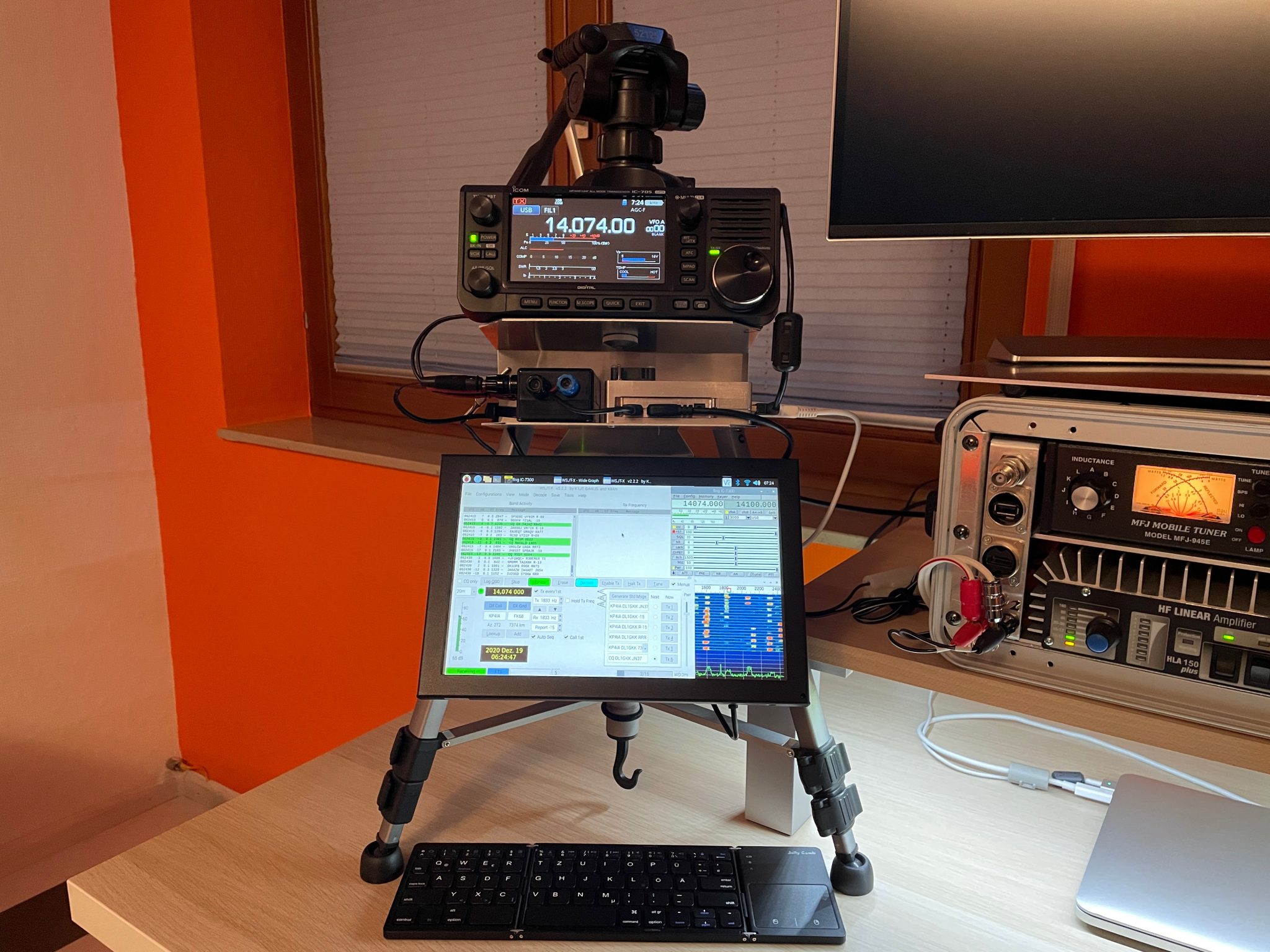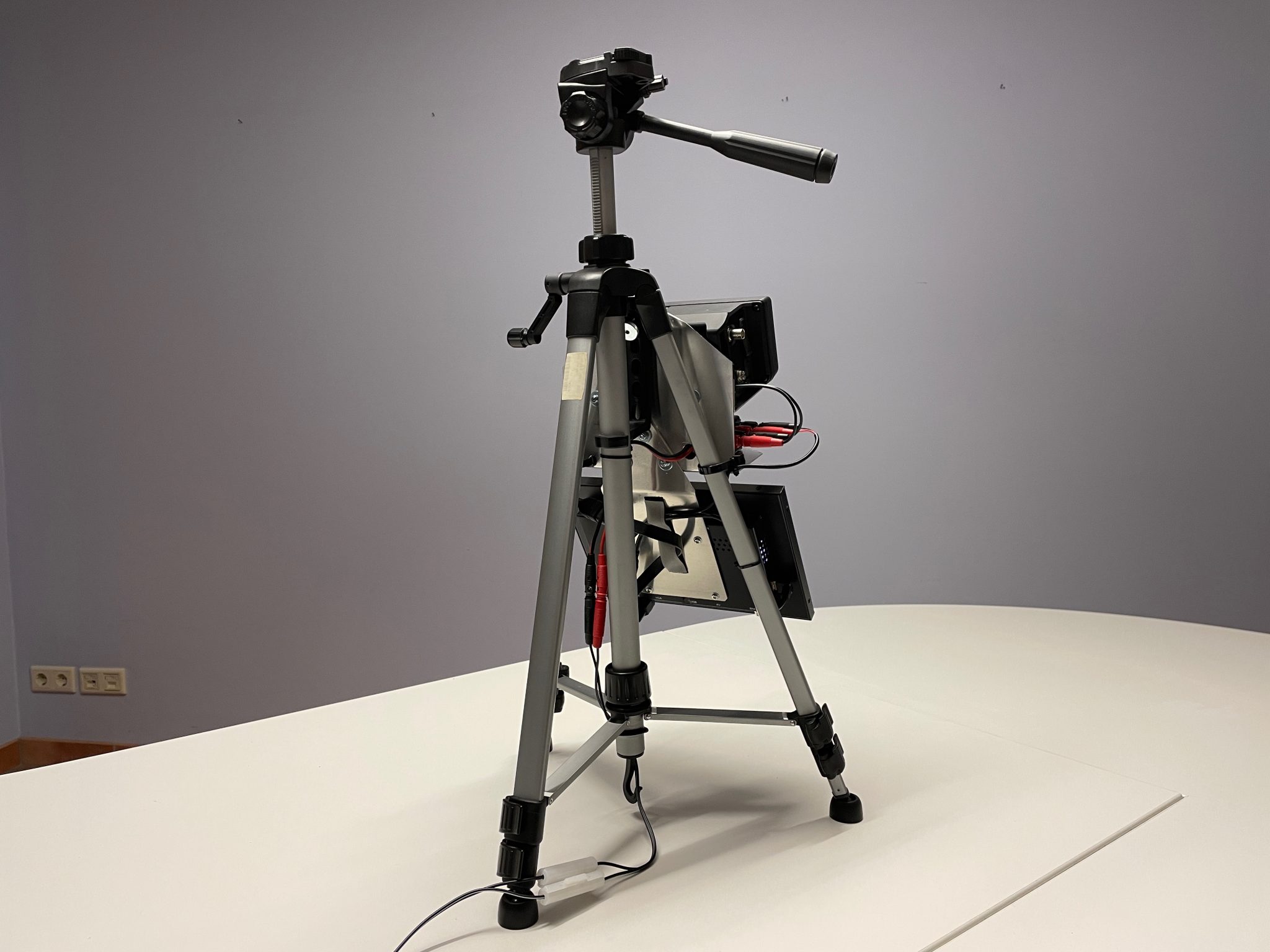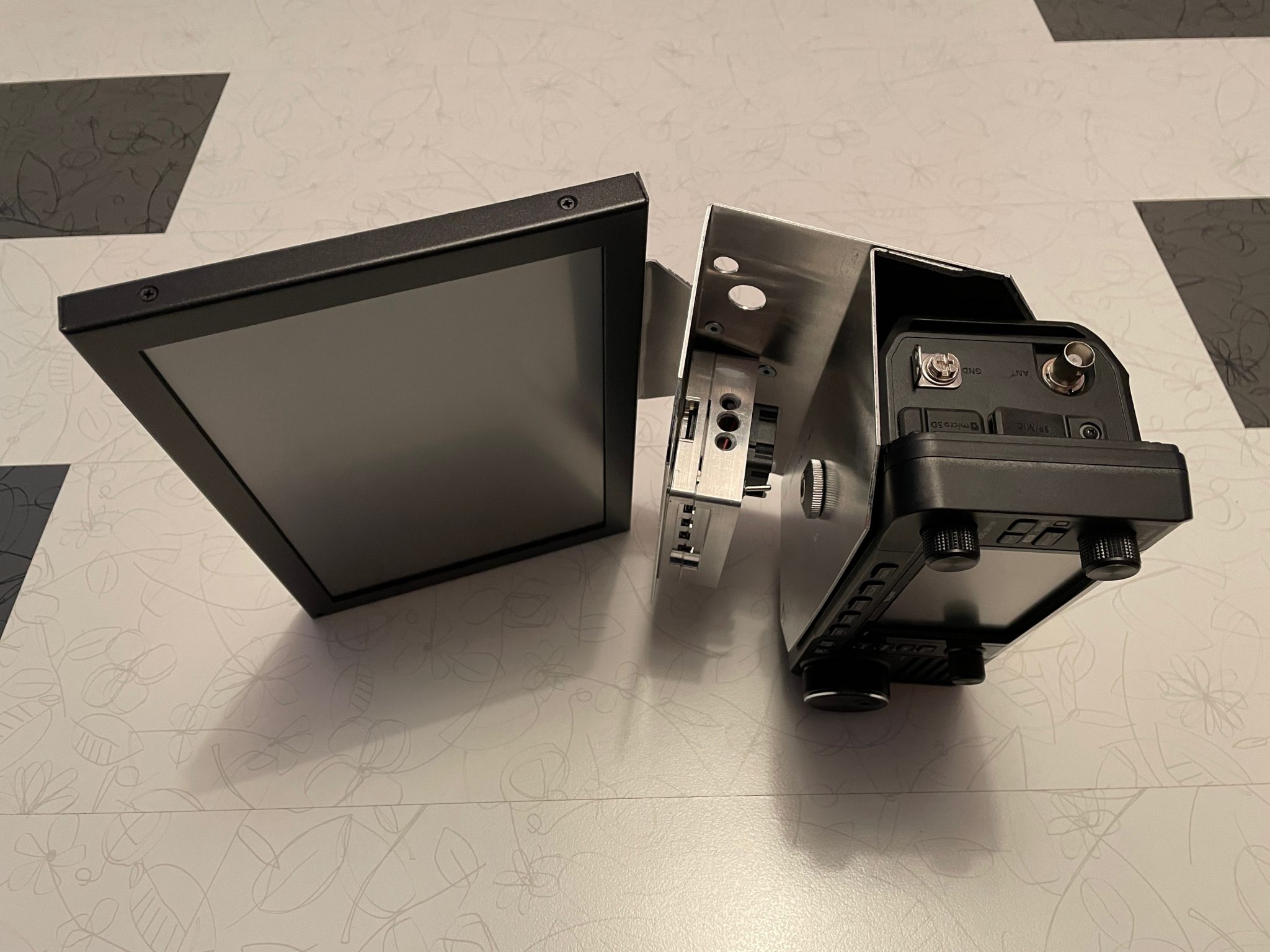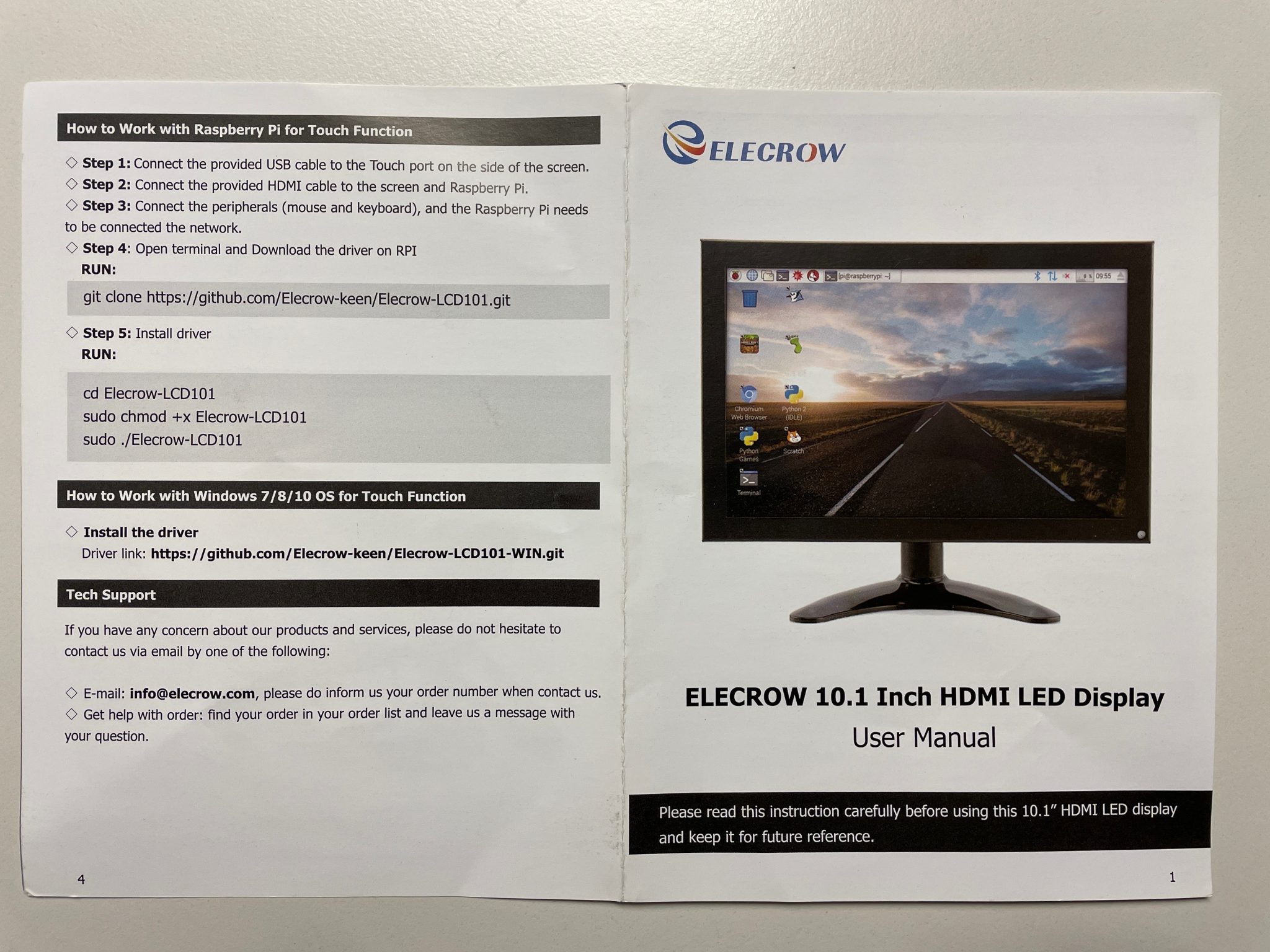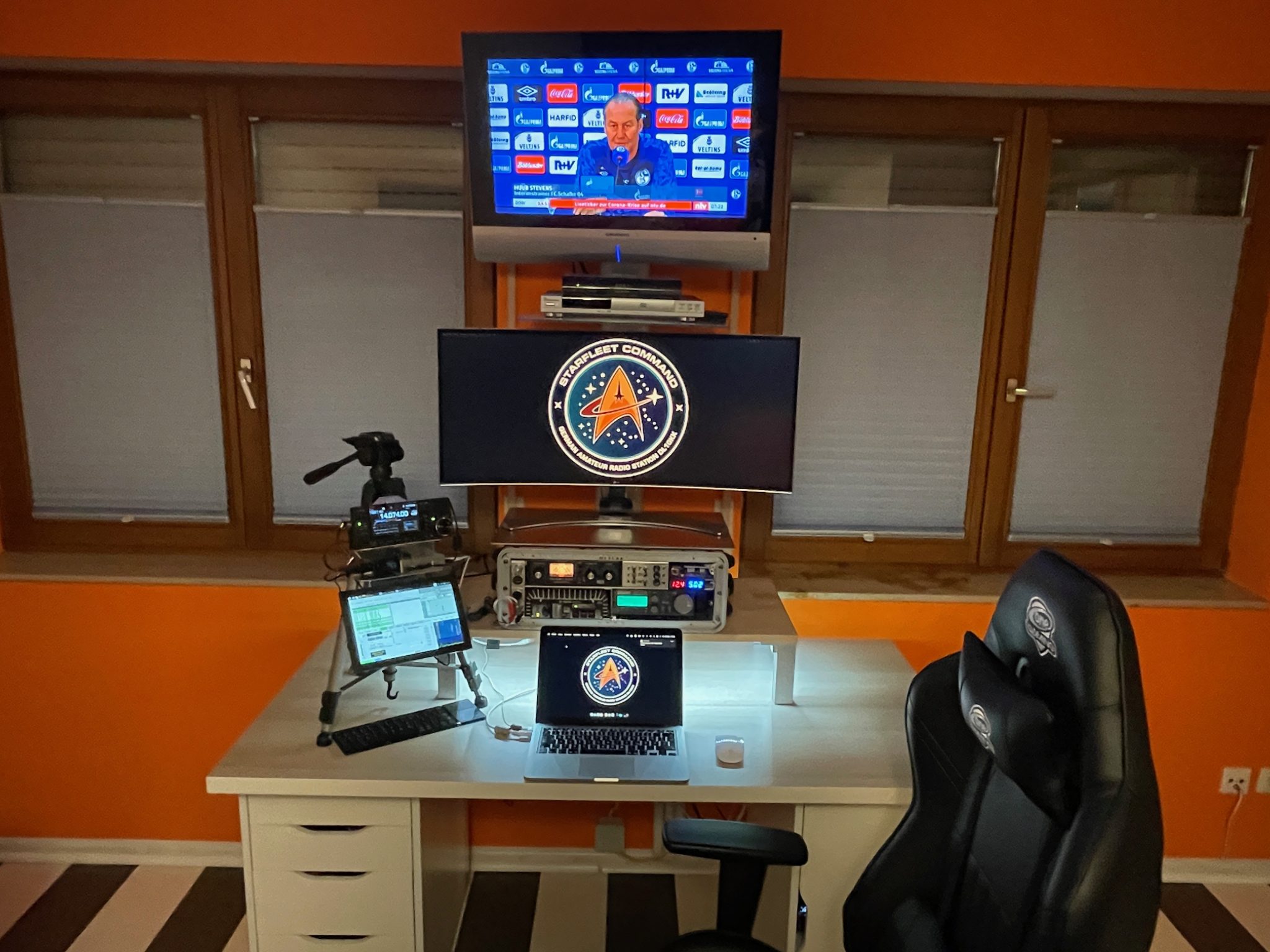I’m a big fan of outdoor radio, the Raspberry PI computers and lately the ICOM 705. I’ve always wanted to have the most perfect GoBoxes possible to be able to transmit and receive quickly everywhere. Grab and go is my motto. Particularly the digital modes please me thereby very much.
For my QRP portable antennas, an AlexLoop for HF and a LogPeriodic antenna for VHF/UHF I use a Cullmann ALPHA 2500 tripod.
Soon I had the idea to mount my radio and the Raspberry PI4 on it as well. The solution were self-bent, 1.5mm thick, aluminum sheets that were screwed to the handle mount of the tripod and additionally fastened with cable ties on the side.
At first, I used my iPad Pro as keyboard and monitor, as usual for me. The iPad is the WLAN hotspot into which the Raspberry PI automatically dials in. So, I can easily control the Raspberry PI with a VNC client on the iPad.
But somehow this didn’t feel right. A second computer “just” as a keyboard and mouse replacement? So, I went back to the roots, where I started many years ago and mounted an additional monitor.
It’s a fairly sturdy, but simple 12 volt, 10.1. inch HDMI monitor with a resolution of 1280×800 pixels. Actually, the monitor has touch, but the driver does not currently work properly with the PI4. But that’s not really important, because I always have a small, foldable Bluetooth keyboard with trackpad and a small Bluetooth mouse with me. A monitor smaller than 10 inches is not recommended because otherwise not all functions can be seen on the screen with some programs. A bigger monitor needs more space. A higher resolution requires good glasses and I’m not getting any younger, so this monitor is perfect for me.
For power supply I use a 12V powerbank with solar panel. Currently I am thinking about getting another portable power supply to add to it. The power supply for the Raspberry PI is realized with a step down converter which I set to 5.1V in the black box left from the Raspberry PI.
For all my GoBoxes I use aluminium sheets as carrier material and holder. This is very stable and has the advantage that all devices attached to it are connected via ground and can give off heat to the sheets for cooling. I also use my Raspberry PIs exclusively in ALU housings. All this in conjunction with ferrite cables over the most important connection cables (HDMI, USB etc.) makes the setup very secure against high-frequency radiation and associated interference. Wherever possible, I connect an additional cable to a ground connection. This way you can also be qrv with higher transmitting powers without any problems.
Antennas, power supply, cables etc. fit well in a backpack and the tripod with the devices firmly screwed to it can be carried well. For longer journeys, it is easy and quick to unscrew the IC-705 and monitor and pack them separately. As weather protection I will still make a protective cover.
The tripod is already quite stable. If you want to improve the stability further, simply hang a weight, e.g. your backpack, on the bottom hook of the tripod. This is quite sufficient even in light wind.
But also, at home in the shack the tripod with the devices, on the table, makes a good figure. Raspberry PI and IC-705 work perfectly together. How this works I have already described in other articles on my homepage. Also, how to install the most important amateur radio programs on the Raspberry PI.
73, have fun and stay healthy
Karl-Heinz, DL1GKK


